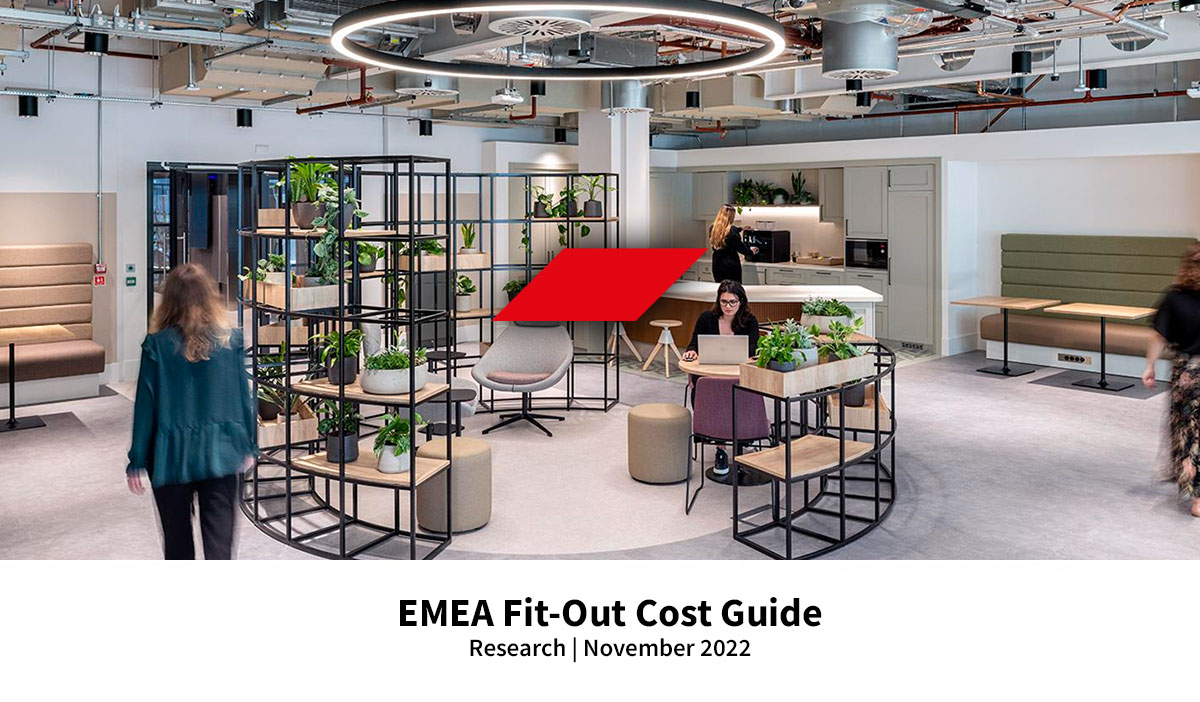The past year has brought a lot of economic turbulence, from the still-felt effects of the pandemic to the consequences of the war in Ukraine, rising commodity prices and disrupted supply chains to currency fluctuations and energy price hikes. This situation is driving the rising costs associated with building and finishing commercial real estate. At the same time, price increases are accompanied by an evolution in office design as companies increasingly opt for a hybrid work model and pay more attention to employee welfare and sustainability. Each year, Tétris takes a look at the current budget challenges associated with office fit-outs in the EMEA region, compares them with current trends, and summarizes everything in its Fit-Out Cost Guide report. What are the conclusions of the latest publication?
On the path of creating new standards in the workplace
JLL's London headquarters sets new standards for office space. It is diverse, inclusive, and hybrid-ready. At the same time, it was built with the environment and ecology in mind. Our designers incorporated the principles of the circular economy by recycling and upcycling furnishings that were transferred from the previous headquarters or obtained from other sources—as much as 80 percent of the furniture comes from such processes," explains Wojciech Kaczmarczyk, Chief Commercial Officer, Tétris in Poland.
explains Wojciech Kaczmarczyk, Chief Commercial Officer, Tétris in Poland
A growing interest in inclusivity
In Western European countries, the notion of inclusivity is becoming more common in office design. In our home market, we encounter it less often, but we can assume that in 2023 this trend will develop, as we already apply certain aspects of it in our daily work. It is about incorporating height-adjustable desks, furniture tailored to different body shapes, and a varied work environment with neurobiological diversity in mind. That's why we use several types of spaces in the offices we design so that employees can choose and adjust the place where they perform their duties to their preferences—we're talking about areas with sofas, quiet work rooms, or classic open spaces.
explains Wojciech Kaczmarczyk, Chief Commercial Officer, Tétris in Poland
Office among the work benefits
In office trends, there will be a focus on innovation and solutions concentrated on collaboration, learning, and socialization. Open space is doing well and will continue to dominate in companies because such a layout facilitates collaboration and, with the reservation of seats at desks, it works well for hybrid work
says Wojciech Kaczmarczyk, Chief Commercial Officer, Tétris in Poland
How do the new realities translate into costs?
Market observations suggest that some organizations may reduce office space due to fewer employees occupying it at one time. Such a decision can potentially offset the higher cost of finishes per square meter, leaving the total capital cost of the project unchanged. At the same time, with modern technologies and solutions affecting the higher cost of finishes, we can reduce operating costs in the long run - which is not insignificant in the final balance.
says Wojciech Kaczmarczyk, Chief Commercial Officer, Tétris in Poland
Photos by Jonathan Banks
A subsidiary of JLL, a Fortune 500 company, Tétris is a leading design and build firm. Its mission is to design and build vibrant spaces that inspire people to think better, work better and live better. With a global team of engineers, architects and designers, Tétris is able to provide a full range of services to meet clients' needs from design to construction and furniture selection (FF&E). Globally, since its inception in 2003, the company has grown in 18 countries on three continents, with a team of more than 820 people located in 35 offices. For more information, visit Tétris-db.com.



